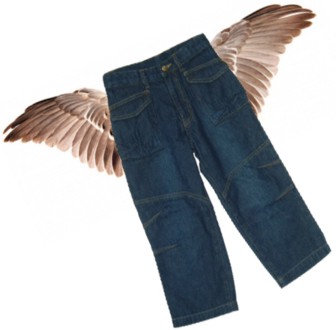 At most of the writers’ conferences I’ve attended, this topic came up: Should we plan and outline our novel before we start writing, or should we write “by the seat of our pants” and let the story happen organically?
At most of the writers’ conferences I’ve attended, this topic came up: Should we plan and outline our novel before we start writing, or should we write “by the seat of our pants” and let the story happen organically?
Some people refer to these two different approaches as “plotting” versus “pantsing.” There are arguments for and against both methods. I don’t know of any writer who doesn’t at least have some clue how she thinks the plot will progress before she sits down to write. But I also know if we write constrained to a detailed outline and don’t listen to what our characters are telling us, we’ll end up with flat characters and forced plot lines. There’s something exciting about a story taking on a life of its own, and that’s what makes me a pantser. I confess, once beyond my college freshman Principles of Writing class, I have never outlined a short story.
Plotters
Plotters plan out their novels in detail ahead of time, sometimes mapping every scene, so they know what’s going to happen before they write it. This makes it easier to bust through writer’s block. They’re less likely to get stuck because they know what’s going to happen next. Plotters also tend to get their novels written faster, or at least more smoothly. But if they do get stuck or discover they want to change something, they often have to redo their whole outline. And characters that have to salute and behave according to a detailed outline can seem wooden and contrived. Stories, like life, should have some complicated nuances that show up organically.
Pantsers
Pantsers have the freedom to take their novel in any direction they want. They have flexibility. They’re not stuck following an outline, so if they don’t like a character, they can simply kill him. Or if they don’t like the way their plot is going, they can change it. However, pantsers can easily get writer’s block and end up abandoning old projects for new ones. They can also make big mistakes in story structure or get lost or distracted somewhere along the story arc. They may end up with some beautiful writing, but the plot can be iffy and the focus fractured, and therefore the story suffers.
Plantsers
People who use a little of both approaches can be called “plantsers.” That’s what I’m aspiring to become. A few years ago I wrote my memoir totally by the seat of my pants, and the biggest complaint from beta readers was with story structure and some scenes that were questionable as to purpose. It had some great writing, but some of it read too much like an album of quirky memories instead of a coherent story. So eventually I’ll have to go back to that book and approach it like a mad plotter. Right now it’s sitting on a back burner… simmering.
Starting with a Scene
When I started my novel, I had an idea: some images in my head, and a couple of characters and what I might do with them. I began by writing one scene—by the seat of my pants, naturally—to see what happened. This is how I intend to start any novel-length fiction writing. If I like the experimental scene, the characters and the voice, and if they open up interesting possibilities for character development and themes and metaphors about life, then I’ll lay out a very general storyboard for the plot. Since it will be a full-length book, I’ll have to pay attention to the ebb and flow of intensity and where my plot points and climax will occur, and I’ll want to prevent the story sagging in the middle. But I don’t want to feel constrained to a detailed outline; in fact, for me that would be paralyzing and probably require a couple of margaritas!
Stepping out of Our Comfort Zones
Some writing mentors have suggested that natural pantsers should try using at least a general outline and see what happens. It could turn out to be a good mixture—pantser writing with plotter planning. (Say that three times fast…) And plotters, at least to get started, should try writing using stream of consciousness in order to tap into creativity energy before all the marching orders are laid out, and let some of the details fall where they may.
Why editors love pantsers: They write with such flair and gusto, and their scenes are imbued with in-the-moment passion!
Why editors love plotters: All the moving parts of their stories line up so very beautifully! And plot holes? What plot holes?
Some references:
- http://thewritepractice.com/plotters-pantsers/
- http://www.writersdigest.com/editor-blogs/guide-to-literary-agents/jan-29
- http://www.soyouthinkyoucanwrite.com/2014/09/pantsers-and-plotters-two-faces-of-the-same-writing-coin/
- http://www.goodreads.com/blog/show/549-plotters-vs-pantsers-can-you-guess-which-side-stephen-king-and-j-k-ro
